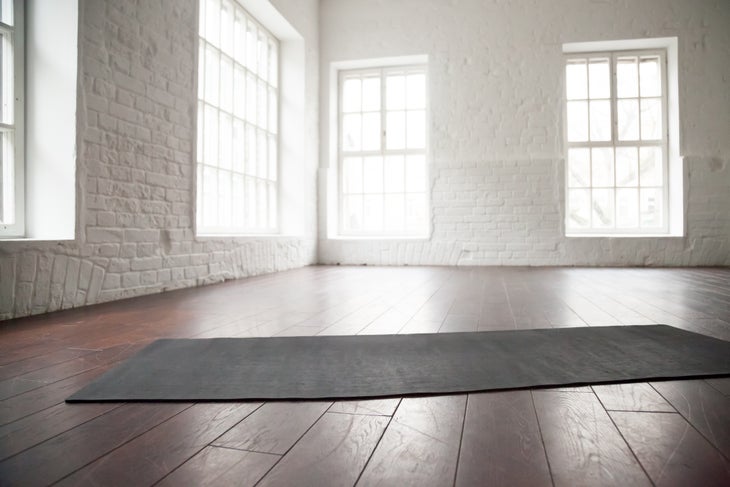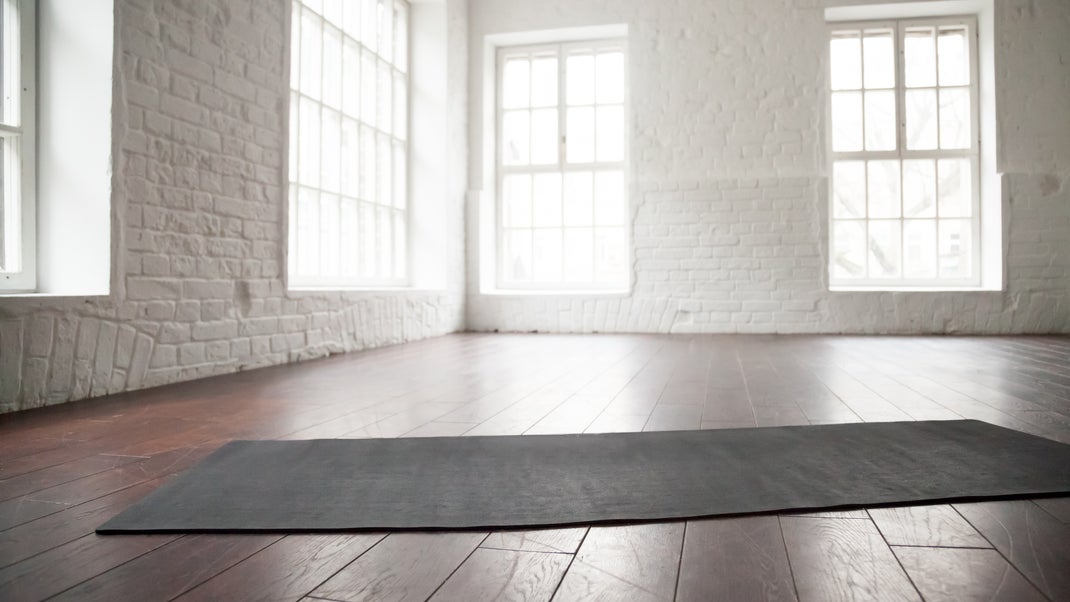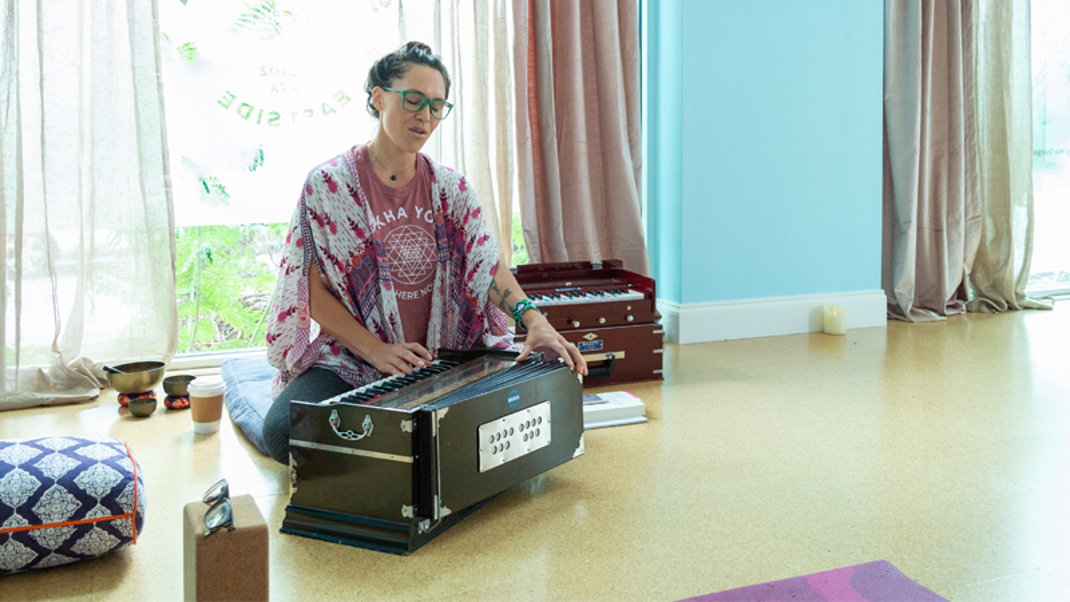YogaWorks, the Yoga studio that opened in 1979 with the intention of teaching Yoga to New Yorkers, is permanently closing its doors. YogaWorks will be holding a sale from now until April 30th and all profits from these sales will go to charity!
On Wednesday, an email from YogaWorks CEO Brian Cooper delivered the news that all four remaining New York locations of this popular yoga studio chain would permanently close effective Sunday, April 19, due to economic challenges.
YogaWorks, founded by teachers Maty Ezraty, Chuck Miller, and Alan Finger, first opened in 1987 in Santa Monica, California, and grew to more than 60 studios across the country. The YogaWorks school combined different styles of yoga, including Iyengar and Ashtanga, helping to create the vinyasa yoga trend and the careers of many of the yoga teachers students seek out today, including Kathryn Budig, Annie Carpenter, and Seane Corn.

“As a region, YogaWorks’ New York operations have lost money for several years despite many initiatives to improve studio performance and reduce losses, including closing individual studios, as we have tried desperately to keep New York afloat,” Cooper wrote in the email. “Even after closing Westside and SoHo, the economic realities are clear that there is no path to reduce our losses and get the New York region to break even.”
YogaWorks has endured substantial fixed costs and intense competition from trendier boutique studios, even as classes everywhere have migrated to online or Livestream formats during the coronavirus pandemic. YogaWorks would not be the only studio to point out the financial struggles of operating within the New York yoga market, even well before coronavirus had arrived in the United States and forced studios to close. Jivamukti Yoga, an iconic yoga brand owned by Sharon Gannon and David Life, closed the doors to its last-remaining New York City studio on December 22, 2019.
“Our only truly successful studio in New York, Eastside, is now closing as a result of losing our lease,” Cooper writes. “Losing Eastside leaves only three locations, which are each losing money and pushing the region deeper into the red.” In a follow-up statement to Yoga Journal, the company said that despite its best efforts, its New York businesses had struggled financially for an extensive period of time. “This is certainly not the outcome we neither wanted nor anticipated, but these considerable obstacles, which were exacerbated by the COVID-19 pandemic, have unfortunately made it inevitable,” a YogaWorks spokesperson wrote.
The pandemic also shines a spotlight on the tenuous nature of trying to make a living teaching yoga. Most teachers make hourly wages as contractors, often depending on the popularity of their classes, and piece together a schedule among various studios, private clients, retreats, and workshops and training. Most studios do not provide health insurance and other benefits, and under normal circumstances, when you lose a class or job due to a studio closure or schedule change, you can’t apply for unemployment.
Teacher Unionization Efforts Come to a Halt
The shockwave associated with the YogaWorks announcement quickly circulated among teachers, staff, and Unionize Yoga, the first-ever yoga teachers’ union, which formed within YogaWorks NY in September 2019.
Unionize Yoga began just over a year ago in February 2019 as a small initiative among YogaWorks NY teachers who were discussing what job security, health insurance, equity, seniority, and even autonomy could look like for their profession. “We formed our union out of great care for our profession, for each other, and for our students,” reads an email from Unionize Yoga to its supporters in response to the New York closures. “We educated ourselves about our rights as workers. We educated our employer about those rights, too, and our profession has been impacted in important ways.”
Despite initial resistance to unionization, YogaWorks came to respect their teachers’ right to unionize last fall, when they organized under the International Association of Machinists and Aerospace Workers (IAMAW) and subsequently became formally recognized as a union by the National Labor Relations Board (NLRB). Fast-forward to March 2020, just prior to the onset of the COVID-19 pandemic, when Unionize Yoga and YogaWorks conducted their first two rounds of negotiations.
And now that studios across the country have closed and more than 17 million Americans have filed for unemployment, there has maybe never been a more pressing time than now to consider the possibility of a yoga teachers’ union. But, as Veronica Perretti, 37, a former YogaWorks teacher and former teacher manager in New York says, “You can’t successfully unionize when a company is losing money.”
For some YogaWorks teachers like Perretti, who was among the minority group that voted against the union last fall, the news of the studio closures, as upsetting as it was to receive, didn’t come as a surprise. As the former NY teacher manager for nearly four years, Perretti says she was aware that the company had been losing money in the region for a while—at least since she held that position before leaving it in 2017.
Perretti told me she thought that unionizing within a company that was operating in the red would be the writing on the wall—and would lead to studio closures. “I voted no on the union because I thought that was the best way to protect my job; that if teachers unionize it would be a great excuse for YogaWorks to say ‘this region is not profitable and we have to close,’” Perretti said. She says she didn’t speak out about it a year ago because her opinion was an unpopular one.
“There was so much support in the yoga community at large for this idea, and it made me angry that there were people who don’t even work at YogaWorks who were out there promoting it,” she says of the unionization efforts. “So for teachers like me who were against it, it made us feel like we couldn’t speak up—because it could result in us losing our jobs—and in hindsight, I probably should have.”
David DiMaria, 42, a representative of the IAMAW’s Eastern territory and advocate for Unionize Yoga, pointed out that the efforts to unionize didn’t add any costs to the company since they were still in the process of negotiating the first contract. “I would say there were much larger issues at play including the company’s inability to find a replacement location for the Eastside studio once the lease ran out, compounded by the effects of the current pandemic,” he says, adding that if the closure of the New York studios had anything to do with the teachers’ union it would be a violation of federal law. “It’s hard news for all involved, so I don’t want to discount anyone’s feelings—but with all the information we have we just don’t see it.”
As YogaWorks has openly expressed, the company had been struggling financially for quite some time. The Westside location in New York had closed in late-2018, and a source familiar with the downtown Brooklyn location has said that the studio had been struggling for years. By the time the SoHo studio closed in 2019—no doubt YogaWorks NY’s largest, most impressive, and quite likely, most expensive location—the financial strain in the region was mounting. Though a smaller SoHo space remained in its place and potentially saved the company in exorbitant rent costs, it failed to withstand the financial setbacks of COVID-19—particularly when only one out of the four remaining studios in the region, Eastside, was actually profitable. Meanwhile, YogaWorks’ other studios around the country (Los Angeles, Atlanta, Washington DC, et al) will remain fully operational (at least in online streaming format) for the time being.
“We cannot stress enough the levels of gratitude, appreciation, and sympathy that we have for all of our New York City teachers and team members, and we thank them for their tireless dedication to YogaWorks and our students,” a spokesperson for YogaWorks said.
Unionize Yoga has been fighting for transparency surrounding studio revenue and financials.
On a group Zoom call late Wednesday night with the union and about 35 YogaWorks teachers, Perretti says that one of the teachers who had voted in favor of the union began to tear up when she expressed the possibility that the studio closures may have had something to do with the decision to unionize. That opinion, Perretti says, was not shared by the rest of the group. Following that call, Jodie Rufty, a senior teacher at YogaWorks for 20 years and the director of trainer development for the NY teacher training staff, sent an email to YogaWorks teacher training staff. “It’s important to acknowledge these closures were imminent and not a result of the union,” she wrote.
What all of this means for the future of Unionize Yoga and for other teachers outside of YogaWorks who may want to form a union remains unclear, particularly in the age of coronavirus and a fast-shifting industry-wide landscape. “I don’t think it’s a great indicator,” Perretti says. “I’m not against unionizing—I’m against unionizing when you’re working for a company that’s already struggling to pay you.” (YogaWorks, an anomaly in the industry, employs its teachers as part-time employees rather than independent contractors, which gave teachers the right to organize as a legally recognized union. In a statement provided to Yoga Journal from YogaWorks, the company stated it also offers benefits to employees like sick pay, workers’ compensation, and 401K. Health insurance is offered to full-time teachers who teach the equivalent of 10 classes per week.)
Unionize Yoga has said they plan to continue negotiating and bargaining with YogaWorks to ascertain what rights and concessions they can assert following the closures. But without a company to organize within, how can Unionize Yoga continue? According to union representatives, this is only the beginning of a re-imagined industry—one that envisions many possibilities, from a teaching co-op to a guild, and ensures the sustainability of the profession through job security and equitable pay.
On Friday, Cooper hosted a virtual “town hall” meeting for all NY teachers on Zoom, which addressed teachers’ concerns about the union. In a recording obtained by Yoga Journal, Cooper stated that the decision to close the New York locations had nothing to do with unionization and everything do the economics that was driven by the loss of the Eastside lease and the ongoing losses experienced by the region.
“None of us knows what the future will look like, but over the past year we have gotten a glimpse of how vibrant it can be when we all come together in mutual support and collective care,” a Unionize Yoga rep said in an email. “The organizing will continue.”
Conclusion:
YogaWorks to close all YogaWorks locations in New York City. Yoga Works has been struggling financially and the closures are not a result of their staff unionizing. Unionize Yoga plans to continue negotiating with Yoga Works for better contracts, benefits, and job security for Yoga Works teachers around the country.




